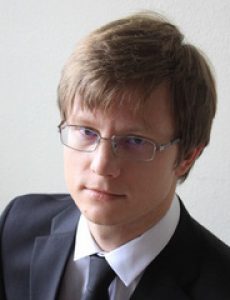Nadiya Komzyuk
2018 Patricia and Harry L. Bruce Scholarship Recipient
Biography: Nadiya Komzyuk is a third-year Business Economics student, who is passionate about applying economic theory and data analysis to strategy improvement. Her high academic achievement, business acumen, charisma, and sharp analytical mindset have earned her recognition as one of the top students in the UCLA Economics Department.
She is also very active in the UCLA community. In addition to being involved with several student organizations, she is currently the Vice Chair of the Finance Committee for the UCLA Undergraduate Student Association Council. In her free time, she enjoys taking road trips, spending time with her friends and family, and being a part of her local church.
Future Plans: This summer, Nadiya will be interning for a public-sector consulting firm in Sacramento where she will work on analyzing the economic and social impacts of various state projects and providing consultation regarding strategy, efficiency, and business process improvement. (She is also planning a back-packing trip to Asia!) Upon graduation, she hopes to expose herself to experience in different industries before potentially pursuing an MBA or law school.
What does the scholarship mean to me?: I would like to sincerely thank the donors of the Patricia and Harry L. Bruce scholarship for their generosity and investment into my future. I am extremely grateful. For me personally, this scholarship could not have come at a better time, as this year has been very financially challenging for me and my family. This scholarship has given me the opportunity to take a leave from work to focus on the recruitment season, as well as to take advantage of the many opportunities for personal and professional growth offered by UCLA. Thank you, again, for your tremendous impact on my career and my future.


